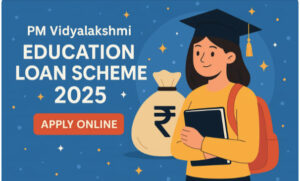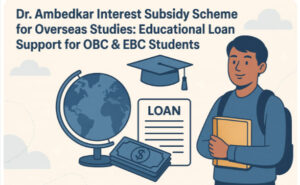In today’s competitive job market, acquiring new skills is essential for career growth and financial stability. The Vocational Education and Training Loan Scheme, launched by the Ministry of Social Justice and Empowerment aims to empower youth from marginalized communities by providing financial assistance for skill development programs. This blog post delves into the details of this scheme, including eligibility criteria, benefits, expenses covered, and the application process.
What is the VETL Scheme?
The Vocational Education and Training Loan Scheme is a government-backed initiative designed to enhance the employability of individuals from target groups by funding their vocational education and training. It offers need-based financial assistance to cover up to 90% of the total course expenses, ensuring that financial constraints do not hinder access to quality skill development programs.
Expenses Covered Under the Scheme
The loan can be used to cover a wide range of expenses associated with vocational courses, including:
- Admission/Tuition Fees: Costs related to enrolling in the program.
- Examination, Library, and Laboratory Fees: ees required for assessments, library access, and practical training.
- Caution Deposit: Refundable deposits collected by institutions.
- Books, Equipment, and Instruments: Essential materials needed for the course.
- Boarding and Lodging: Accommodation and food expenses if the course requires relocation.
- Insurance for Loan Amount: Coverage to safeguard the loan amount.
- Other Reasonable Expenses: Any additional costs certified as necessary by the training institute.
Key Benefits of the Scheme
- Loan Quantum:
- Up to 90% of the total course expenses can be financed.
- For courses lasting up to 2 years, the maximum loan amount is capped at Rs. 4,00,000.
- Any cost overruns beyond the sanctioned loan amount must be borne by the beneficiary.
- Affordable Interest Rates:
- The National Safai Karamcharis Finance & Development Corporation (NSKFDC) charges an interest rate of 1% per annum to the channelizing agency.
- Beneficiaries are charged an interest rate of 4% per annum, with a 0.5% rebate for women applicants.
- Flexible Repayment Period:
- Loans can be repaid over up to 7 years, making it easier for beneficiaries to manage their finances.
Eligibility Criteria
To avail of the Vocational Education and Training Loan Scheme, candidates must meet the following criteria:
- Target Group Membership => Applicants must belong to the target group identified by the NSKFDC.
- Course Admission => Candidates must have secured admission in a vocational course approved or supported by a government ministry, department, or organization. Courses should ideally lead to certifications, diplomas, or degrees recognized by government authorities.
- Course Duration => Only vocational education and training programs with a duration of 6 months to 2 years are eligible.
- Age Requirements;
- Minimum age: 18 years (at the time of course completion).
- Maximum age: 50 years.
How to Apply Online
Applying for the Vocational Education and Training Loan Scheme is a straightforward process. Follow these steps;
- Visit the Official Website: Navigate to the official portal of the Ministry of Social Justice and Empowerment or the NSKFDC.
- Access the Application Form: Click on the “How to Apply” section and download the loan application form.
- Fill in Details: Provide all required information accurately and save the form.
- Submit Documents: Attach scanned copies of the necessary documents (listed below) and apply for the same.
Necessary Documents for Application
To complete your application, ensure you have the following documents ready;
- Aadhaar Card
- Driving License (if applicable)
- Bank Account Details
- Caste Certificate
- Income Certificate
- Domicile Certificate
Frequently Asked Questions (FAQs)
1. What are the age criteria to apply?
- Candidates must be at least 18 years old at the time of course completion and should not exceed 50 years
2. What expenses are covered under the scheme?
- The scheme covers tuition fees, examination fees, caution deposits, books, equipment, boarding, lodging, and other reasonable expenses certified by the training institute.
3. How long do I have to repay the loan?
- The repayment period is flexible, extending up to 7 years.
4. What is the interest rate for the loan?
- The interest rate is 4% per annum with a 0.5% rebate for women applicants.
5. What courses are eligible under the scheme?
- Courses must be vocational education and training programs lasting between 6 months and 2 years, approved by government bodies or organizations authorized by the National Skill Development Corporation (NSDC).
6. What is the eligibility criteria?
- Applicants must belong to the target group, have secured admission in an eligible course, and meet the age requirements.
The Vocational Education and Training Loan Scheme is a transformative initiative aimed at bridging the skill gap and empowering individuals from marginalized communities. By offering affordable loans and covering essential expenses, the scheme ensures that financial barriers do not stand in the way of achieving professional success.
If you meet the eligibility criteria, don’t miss out on this opportunity to enhance your skills and secure a brighter future. For more information, visit the official website of the Ministry of Social Justice and Empowerment or the NSKFDC.



